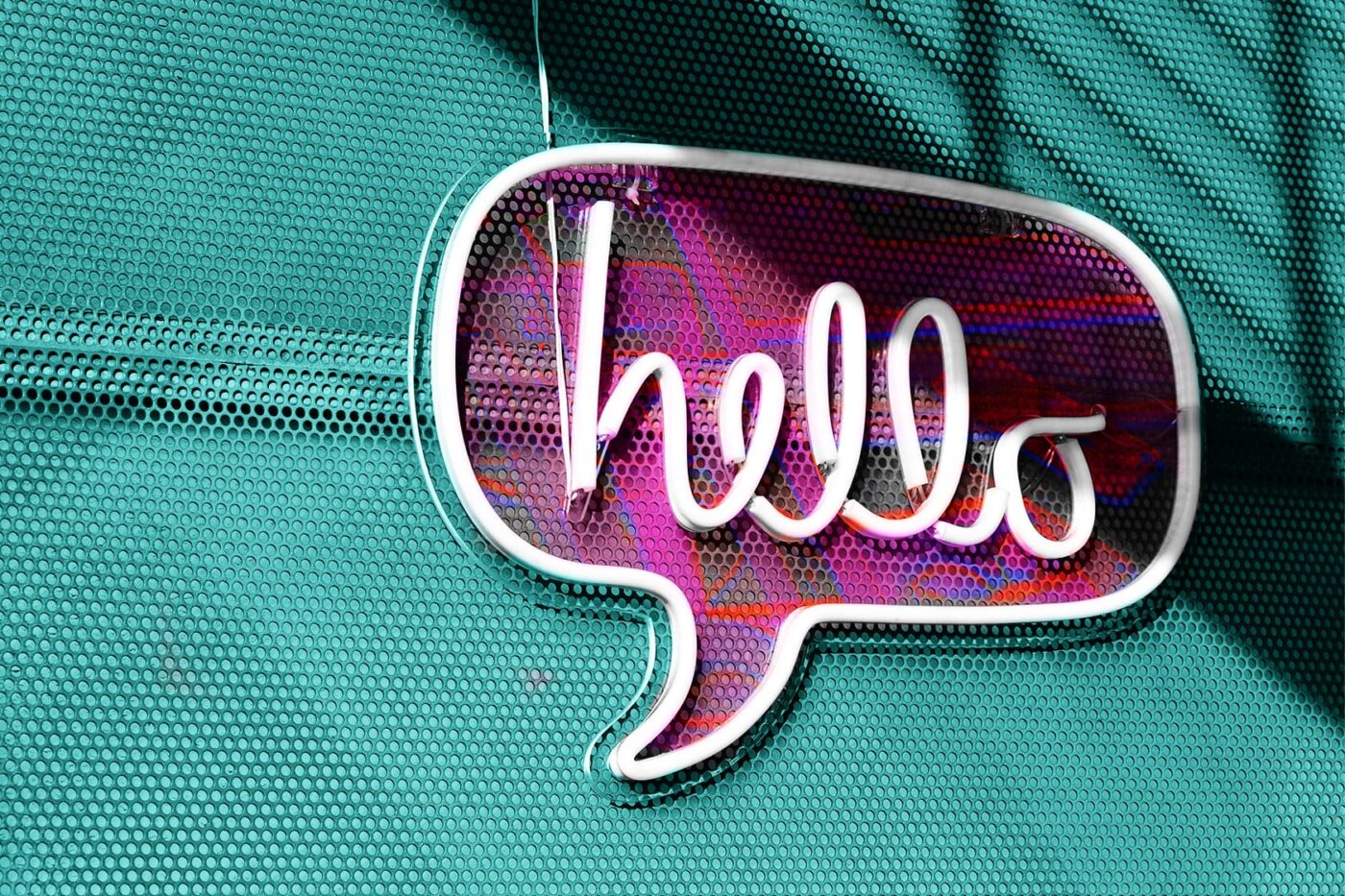Odds are that at some point over the last few years, you’ve heard about or interacted with a chatbot. Maybe your company, or one or more of your clients, already has one in place. They’ve gotten a lot of hype as a tool for lead generation, consumer education, customer service, and more – but it’s important to consider a chatbot strategically before you dive in.
What Is a Chatbot?
First, let’s start with the basics. At its core, a chatbot is a program that’s designed to process and participate in human conversation. They can be incredibly simple or stunningly complex – even assistants like Siri or Alexa could be categorized as chatbots. Most chatbots, however, live on text-based messaging platforms and are driven by databases of responses matched up to keywords and phrases. For marketers, chatbots are an opportunity to give your customers the feeling that they are communicating more personally and meaningfully with your brand.
What Do I Need a Chatbot For?
As with any other marketing or service tool, you should consider the goals of a chatbot before you do anything else, and how those goals fit into your overall marketing plan. Think about the people you’re creating it for – not only your traditional target audience, but those who are most likely to use it, and in what context. Consider the objective of any consumer interaction with your bot, and what needs you want it to address. Is it focused on conversions, education, or something else? Don’t forget to take into account the platform it will live on either – messaging via social media platforms, web widgets, and even SMS texting are all possibilities and they all have different needs.
What Do Chatbots Do?
Some chatbots are fairly simple functionally, as more engaging replacements for contact forms, gathering information so human representatives are more prepared going into every interaction. Others are equipped to answer all the most frequently asked questions you receive, sourced from your customer service channels with answers written for clarity to avoid wasting employees’ time and attention with repetitive inquiries. Some chatbots are designed to handle almost every aspect of customer interaction to ensure your team remains focused on their day-to-day, having full conversations, offering solutions, and perhaps sharing an exclusive promotion or two. Chatbots can range widely in their complexity, but what’s important is that you’re clear on what you need and expect it to accomplish from the beginning.
How Do Chatbots Work?
Bots that operate on different scales have distinct approaches to how they are built. Commonly, chatbots start out with conversational flowcharts that establish how a user will be guided with prompts through interacting and finding the information they’re seeking. These are planned visually well before they’re put into place on the chatbot platform, so you have a clear overview of how the bot’s UX will work and can adjust it beforehand. As bots get more complex, natural language processing, or NLP, is added to help the bot understand messages that a user manually writes and sends independent of an established flow, identifying keywords and specific combinations thereof to figure out what it is being asked and which response is appropriate.
As you may guess, NLP tends to start out with an array of basic interactions that are to be expected, often based on existing customer service data. Once they are launched, this typically becomes more mature and developed, as you can then review and identify questions and messages that are either phrased differently than expected, or that were not previously anticipated, and begin to fill in those connections and gaps, creating a more robust and advanced chatbot.
Defining Your Chatbot’s Brand and Personality
It can be overwhelming to consider the development and functionality of a chatbot, which leaves a vital aspect that’s easy to overlook, and just as strategically vital – the creative. It’s true that a straightforward “customer service voice” can be appropriate at times, but there is a lot to be said for letting a bit of personality shine through. Just because it’s a chatbot doesn’t mean that it has to sound robotic. Your chatbot is on the front lines facing your users as a form of interactive marketing, and as such it should be fully in line with your branding. That means taking into account your brand voice and developing a conversational tone that remains consistent with it, while also considering how your users would like to be spoken to.
Consider your brand’s identity and established tone. This should, of course, be based on authentic and defining characteristics of the brand. Perhaps it’s a young company, small and friendly, that supports green initiatives. Maybe it’s an established corporation that has decades of heritage to honor and is genuinely tied into the history of its industry or region. Naturally, verticals are relevant as well – for example, if you were to think about tech, hospitality, finance, and fashion, it’s clear that all of these would have vastly different expectations for brand voices and that their chatbots would likely have very distinct purposes.
Consider Your Audience
Chatbots may also have completely different users or, just as importantly, users who have different needs and expectations in varying contexts. It’s always important to think about your user when you’re approaching creative, considering who they may be and why they are likely to be speaking to your chatbot. They may be likely to have a specific disposition approaching this interaction, or to be doing so in a particular time or place. Think about how you can communicate with them where they are, in a relatable but authentic way. Clearly, the more data you have about your existing customers and interactions, the better you’ll be able to extrapolate this. Having empathy with your users is vital when you’re developing your bot’s persona.
Building a Chatbot’s Persona
The truth is that a persona really is what you’re creating here. Your bot will be talking to your customers just like any human agent would be, and you should ask yourself how you would like the ideal agent to represent the brand. Establishing a persona – essentially, developing a character – is an approach that we’ve taken to creating a more involved chatbot. This means thinking about your bot as a person, giving them a name and identity, considering what their relevant interests could be, their approximate demographic, and how they behave and relate to your users. They may have a sense of humor or they may be serious, they could be chipper or subdued, their role may even be to serve as more of a companion and assistant and as less of a traditional customer service agent.
Whatever you determine about your chatbot’s persona, it needs to be firmly established in guiding documentation to avoid inconsistencies and contradictions in tone and interaction. Anyone that touches the copy for the chatbot should have a strong grasp on how the bot “character” would convey any information, how they would relate to the user, and how they would behave in different conversational contexts. You can position your bot as your user’s friend, but when the user has an issue, even the most casual persona needs to be able to take that seriously.
Best Practices for Your Chatbot
Once you know what your chatbot is intended to accomplish, how it will be structured, and what its branded persona will be, there are a few best practices to keep in mind as you move forward.
- Maintain Transparency
Through all of the creative persona development, our strongest overall recommendation is to maintain transparency. Don’t pretend that your chatbot isn’t a bot – people are fully aware that chatbots exist, and you don’t want to come off as inauthentic or condescending to your users. Own that your persona is a bot, and run with it.
- Chatbots are Constantly Evolving
A chatbot is a constantly evolving tool. As discussed in the context of NLP, once it’s out in the world, it will receive messages and questions that it isn’t prepared to answer. It’s simply not possible to anticipate every single scenario that could bring a user to your chatbot. Make sure that you have human agents who are familiar with the bot and prepared to jump in and back it up when it comes across something it can’t handle. At the same time, remember that any interaction it can’t fully grasp is valuable data that gives you an opportunity to expand its capabilities and utility. Essentially, it can learn and grow from its initial shortcomings.
- Use Your Data Correctly
On a similar note, make sure you’re using your data correctly. Use your preexisting data as effectively as you can to inform the needs of your users that will be addressed by the chatbot, to identify who they are, and to figure out how and where you can help them most effectively. Don’t stop there, either; keep an eye on your chatbot’s data once it’s live and consider any strategic adjustments that should be made, or additional needs it may be able to address.
- Have Fun
Perhaps above all else, from an admittedly biased creative perspective, have fun with your chatbot. Lean into the persona, and remember that the purpose is to connect with your users. It’s been shown that going beyond straightforward plain text achieves better engagement. Use whatever you can to add some lightness to your interactions, whether it’s emojis, GIFs, or even a few easter eggs that the right interactions could unearth.
If you’re ready to consider moving forward with a chatbot and could use a hand navigating this process, contact us today. We’ll connect you with our team that can guide you through everything from concept to launch – goals, development, and creative alike.

